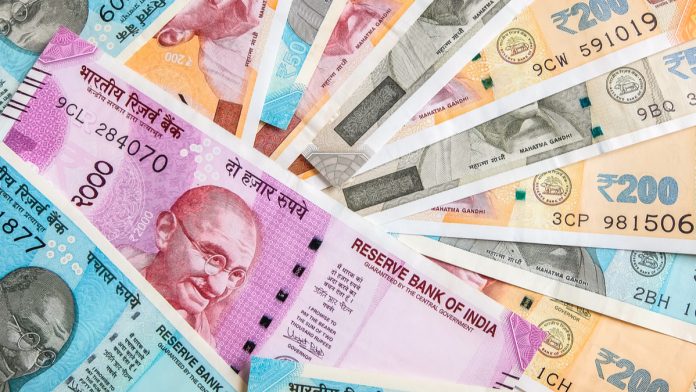- Rupee pares some of yesterday’s 1.1% gain
- PM Narendra Modi announced $266 billion package to revive Indian economy
- Indian industrial production -17% in March
- USD/INR +0.3% at 75.38 at 11:15 UTC >> Real time exchange rates
The Indian Rupee is easing lower on Wednesday after surging over 1% higher in the previous session. The Rupee settled on Tuesday up +1.1% at 75.06, just off a two-week high.
At 11:15 UTC, USD/INR is trading at +0.3% at 75.38. This is approximately mid-way between the daily traded range of 75.05 – 75.50, as investors digest yesterday’s huge economic stimulus package announcement and ahead of Federal Reserve Jerome Powell’s speech.
The Indian Rupee surged in the previous session after Prime Minister Narendra Modi announced a 20 trillion Rupee ($266 billion) economic package to help the country cope with the extended coronavirus crisis. The package equates to around 10% of India’s GDP.
The package is aimed at supporting farmers and small businesses as the country gradually eases lockdown measures in some areas, whilst keeping restrictive measures in place in areas with higher coronavirus infection numbers.
Strict lockdown measures started on 25th March and have had a huge economic impact, particularly on the millions of poorer Indians and immigrants. 140 million people are estimated to have lost their job. Industrial production contracted -17% in March highlighting the impact that the coronavirus crisis is having on the economy.
In addition to the stimulus package, Mr Modi has been laying out strategies to attract new manufacturing investment from firms looking to diversify their supply chains away from China. Mr Modi is looking to present India as an alternative to China.
The US Dollar is trading flat after falling in the previous session amid growing speculation of negative interest rates. Attention will now turn to Federal Reserve Chairman Jerome Powell’s speech later today. His speech comes after US inflation, as measured by consumer prices, dropped -0.8%, in the biggest decline since the Great Depression. The huge slump in inflation prompted speculation that the Federal Reserve could take interest rates into negative territory.
So far, Fed policymakers have pushed back on the idea of negative rates given the impact that such a policy would have on the financial sector. Jerome Powell is expected to stay in line with his colleagues and dash hopes of negative rates.





